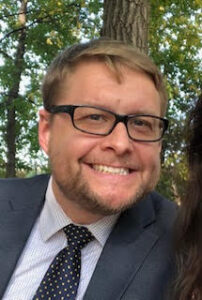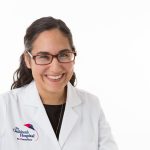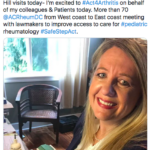Until very recently, Grant Syverson, MD, was the only pediatric rheumatologist in North Dakota. The state now has two practicing pediatric rheumatologists, but he’s still one of only a handful of rheumatologists serving the Dakotas and their neighboring states.
To serve the region’s need for pediatric rheumatology services, Dr. Syverson flies to other states to hold outreach clinics, uses telemedicine and confers with local universities and primary care providers. Despite the regular traveling and the heavy workload, he stays upbeat because he loves helping patients in the place that he and his family call home. Still, he’s hopeful that having another local rheumatologist—Christopher Failing, MD, at Essentia Health in Fargo—will improve care for the region’s pediatric patients.

Grant Syverson, MD
“My hope is that it’ll help with some of the delays in getting in, as far as the Minnesota patients. … I haven’t had a chance to really sit down with [Dr. Failing] and just talk through things because of COVID, but I assume it’s going to be a very collaborative relationship. I mean, there’s enough business to go around,” Dr. Syverson says.
Underserved regions need more pediatric rheumatology providers to help improve the balance between supply and demand, which will in turn improve outcomes for patients. Policy initiatives, such as loan repayment programs and tax incentives, may help attract more providers to the subspecialty and to the more remote regions of the U.S.
All in a Day’s Work
Dr. Syverson, a pediatric rheumatologist at Sanford Children’s in Fargo, moved back to North Dakota in 2016 to be closer to family and because he knew there was a pressing need for his specialty in the region. Before he arrived, he knew of families who would drive eight hours each way to take their children to Minneapolis for infusions, clinic appointments and other services.
As part of his work, Dr. Syverson spends three to five days per month traveling to South Dakota to reach patients who can’t get to Fargo. Because of the geography of the region, he sees patients from Minnesota, Iowa, Nebraska, South Dakota and Montana. He also serves the region’s Native American reservations.
“One really important [aspect of my practice] is the ability to work with the Native American populations in North and South Dakota. … Bringing more and more resources to those populations is going to be good for all of us,” he says. “And … it certainly is something that makes me feel very proud.”
Initiatives to Help
“To me, as a physician and a parent, the fact we have areas in this country with severe limitations in access to pediatric rheumatology is incredibly alarming,” says Blair Solow, MD, chair of the ACR Government Affairs Committee. To address this and attract more providers to the specialty, the ACR advocates for such initiatives as loan repayment programs, she says.
One such program, the Pediatric Subspeciality Loan Repayment Act, was authorized by Congress but hasn’t been funded yet. The ACR is advocating to get the necessary funding now, Dr. Solow says. “Without the funds, the program cannot start supporting providers,” she adds.
These programs are important for attracting providers to the specialty because pediatric rheumatologists often earn less money than generalist pediatricians, and they must complete a three-year fellowship compared with the two-year fellowship for adult rheumatologists.
Unfortunately, pediatric rheumatologists may not qualify for federal or state loan repayment programs because of the specialty nature of the job, according to Joseph Cantrell, ACR’s senior manager of state affairs. “And that’s the case for a lot of cognitive specialists. We have this image of doctors—particularly specialists—that they make a lot of money, when the truth is a lot of them make on par or close to what the primary physician does,” Mr. Cantrell says. “So they’ve been left out because of the idea of the Ferrari-driving specialty surgeon.”
State initiatives may also help expand the workforce on a more local level. In Georgia, Rep. Kim Schofield recently introduced HB 42 (for the second time) to create a program that includes all cognitive specialties. The program would provide $25,000 per year for up to four years for a provider’s commitment to work in an underserved area.
One issue with loan repayment programs is that physicians may stay for the duration of their agreement but then move away, Mr. Cantrell says. He notes the ACR has started discussing legislation for offering tax incentives that could encourage providers to stay in underserved areas for the long term.
“If states want to have providers come to their area, [give] them a reason,” Dr. Syverson says. “In the grand scheme of things, it’s a really insignificant amount of money for a state to pay off one student loan to have somebody live there for 10 years. And once they live there, and they have a family and they get a career, they’re going to be invested in the community and they’re probably going to stay.”
Kimberly J. Retzlaff is a freelance medical journalist based in Denver.


